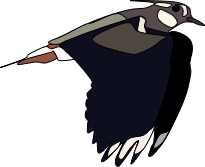Like many people, I surround myself with like-minded individuals. For me, therefore, that means people interested in the environment, animals and wildlife conservation. Of course, many of those know about the UK’s leading conservation charities such as the RSPB and The Wildlife Trusts. But what about Bird Observatories?

I work at a bird observatory and will admit that until I saw the job advertised, I had no idea what a bird observatory was, or that they can be found all around Britain and Ireland. I have worked here now for over a year, so I’d like to think I know what an observatory does, and a bit about the others around our coastlines. So… perhaps like many of my Wildlife Trust-aware friends, you wonder what a bird observatory is and what they actually do?
First of all, no, it’s not a place to see captive exotic, or even native birds. This seems to be a common misconception among average members of the public stumbling upon an observatory for the first time. Nor does it have a giant telescope with which to view birds from the comfort of indoors. Of course, it’s much better than all that!
A bird observatory is primarily a place which carries out long-term monitoring of bird populations and bird migration. Each observatory has its own Warden, and often an Assistant Warden (that’s me), who do most of the censusing and other daily tasks. Basically, this means much of every day is spent recording bird species, ringing birds, and handling all the data. Most observatories record other species too, such as butterflies, moths, dragonflies, other invertebrates and plants, meaning that those who work there tend to have an excellent knowledge of the local wildlife, and the problems that it may face.


Most bird observatories were set up in about the mid-1900s by a group of amateur ornithologists, who had recognised a migration hotspot and become regular visitors to it. These enthusiastic bands of birders would set up a place to watch and ring birds, which then evolved into an observatory. Ringing is a huge part of a bird observatory’s work, and a large part of our knowledge of bird movements, migration and population trends of birds around the UK and Ireland is due to the work of the observatories. Nowadays, many observatories have broadened their focus to become wildlife and nature reserves and are involved in local conservation and education work. They are prime examples of citizen science in action. What’s not to love?
Not any old good birding spot can become an observatory though. To become an official “bird observatory”, each organisation must meet the accreditation criteria set by the Bird Observatories Council (another BOC!). This BOC is a great organisation which co-ordinates and promotes the work of the bird observatories at a national level.
Many observatories are wildlife conservation charities run by a charitable trust, and in this day and age, could probably do with some support or volunteer help. Some bird observatories are even run by the local Wildlife Trusts. For example, Gibraltar Point Bird Observatory is managed and run by the Lincolnshire Wildlife Trust. Observatories also rely greatly on volunteers to help in the day-to-day running of the field centres, data digitisation and overall management.

There are currently 20 bird observatories in the UK and Ireland (map below), with a couple more currently going through the application process. You can see from the map how they are situated around the coastline, in prime positions to view migration. Of these 20, eight are actually on islands not accessible by land, and some of these close during the winter. However, all bird observatories either have or can suggest nearby accommodation, and anyone can visit (at least, pre and post COVID-times), so luckily for us, we can always visit an observatory!
To sum up, bird observatories are great. They are places with fantastic birds and wildlife reserves – and are filled with people with excellent wildlife knowledge. They are places you can visit, volunteer or otherwise get involved with. Basically, you now have 20 new places to visit once COVID restrictions allow. Search out your nearest observatory and maybe even become a member to support them!

Map of current Bird Observatories in Britain and Ireland. Drawn by Becky Downey.
Author Information
This blog was written by Becky Downey who works for The Sandwich Bay Bird Observatory
